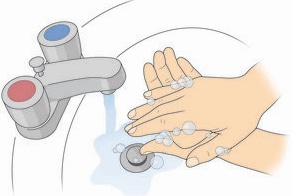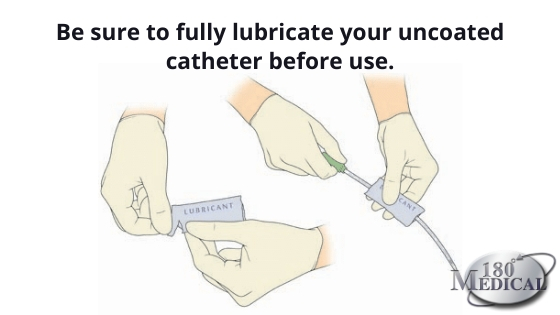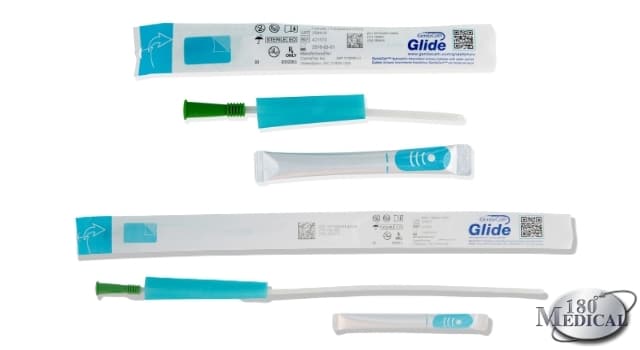One of the most common complications for people who intermittently self-catheterize is the development of urinary tract infections (UTIs). Here are some helpful tips for preventing UTIs when cathing.
Plus, if you need to use catheters, contact 180 Medical. We’re ready to help you find the catheter that fits your needs best and may even help reduce your risk of urinary tract infections.
Common Symptoms of UTIs
Some common symptoms of urinary tract infections that you may experience may include:
- Smelly or cloudy urine
- Blood appearing in the urine
- Fever
- Chills
- Increased urgency (feeling the need to empty your bladder often & sometimes without warning)
- Pain in the abdomen or lower back
- A burning, uncomfortable sensation inside the urethra
If you’re experiencing symptoms of a UTI, see your doctor as soon as possible. The sooner your treatment can begin, the sooner you can beat your UTI and start feeling better.

Why Do People Who Use Catheters Have a Higher Risk of UTIs?
Self-cathing requires the insertion of a foreign object (a catheter) into your urethra to drain the bladder. This may increase the possibility of bacteria being pushed farther into the urethra. In the end, this may cause an infection if the bacteria linger and multiply.
UTIs are sometimes known as CAUTIs (catheter-associated urinary tract infections). This happens when an infection develops in a person who uses catheters.
CAUTIs occur when bacteria or pathogens are introduced to the urethra via a Foley catheter or intermittent catheter. From there, the bacteria can travel up to enter the bladder and even the kidneys if the infection goes untreated.
Top 7 Tips for Preventing UTIs When You Use Catheters
Consider the following tips for preventing the occurrence of urinary tract infections (UTIs).
1. Follow the cathing regimen as your doctor has prescribed.
First, be sure to cath based on your doctor’s recommended schedule. Cathing the prescribed number of times per day keeps your bladder properly drained. This keeps urine from lingering in your bladder too long where bacteria can begin multiplying.
2. Wash your hands before and after catheterization.
 If you don’t practice proper hygiene by washing your hands well, the germs on your hands may contaminate your catheter as you insert it. Using sterile gloves is a good option for preventing contamination from your hands if you don’t have easy access to clean water and soap.
If you don’t practice proper hygiene by washing your hands well, the germs on your hands may contaminate your catheter as you insert it. Using sterile gloves is a good option for preventing contamination from your hands if you don’t have easy access to clean water and soap.
3. Don’t reuse your catheter.
Reusing catheters may increase your risk of contracting a UTI or a bladder infection. Even if you’re cleaning your catheters after using them, they can still have bacteria and pathogens on or inside the tube. Once your catheter has been used, it is no longer sterile. Just throw it away after use, and be sure to keep enough catheter supplies on hand so you’ll have a new sterile catheter ready when it’s time to self-cath again.
Most private insurance companies, state Medicaid programs, and Medicare cover enough intermittent catheters per month to ensure you don’t have to wash and reuse your catheters.
Feel free to give us a call if you have any questions about your current insurance policy’s coverage for catheters and other related urological supplies.
4. Make sure you’re using enough lubrication.
Using adequate lubricant, whether in sterile individual packets or a tube, helps minimize irritation to your urethra as you insert and withdraw your intermittent catheter.

5. Try hydrophilic catheters.
Hydrophilic catheters, such as the GentleCath™ Glide (available in both male length and female length), are designed to reduce the discomfort of urethral irritation and friction even more than standard straight catheters and lubrication.
Hydrophilic catheters also typically include a handling sleeve which will allow you to guide the catheter in without actually touching the tube, which minimizes the risk of contamination from your hands.
6. Use a closed system with a pre-lubricated introducer tip.
The soft, flexible introducer tip lets the catheter get past where the highest concentrations of bacteria are located, which can minimize the risk of pushing germs farther up your urethra.
Closed system catheters come with collection bags. Often, these catheters also include insertion supplies, such as disinfecting wipes and gloves. This type of catheter can be especially useful for those who are in wheelchairs or people who travel frequently and use public restrooms.
7. Learn how to use catheters hygienically.
Lastly, we highly recommend learning how to catheterize properly. This may not only help reduce infection risk, but it can also result in more comfortable catheterization.
If you’re experiencing frequent UTIs and use urethral catheters, it’s time to reconsider your current cathing routine.
For example, are you practicing proper hygiene? Are you drinking enough water and staying hydrated?
Learn How to Catheterize
As one of the top catheter companies in the nation, 180 Medical proudly provides high-quality catheter supplies for our customers. In addition, we offer helpful catheterization instructions and resources, including online step-by-step instructions for how to cath.
We can provide you with advanced catheters that may also help minimize your risk of infection along with instructions on how to cath with hydrophilic catheters and closed system catheters.
Contact our catheter experts at 180 Medical if you’d like to try out some new catheter products that may suit your needs better.
